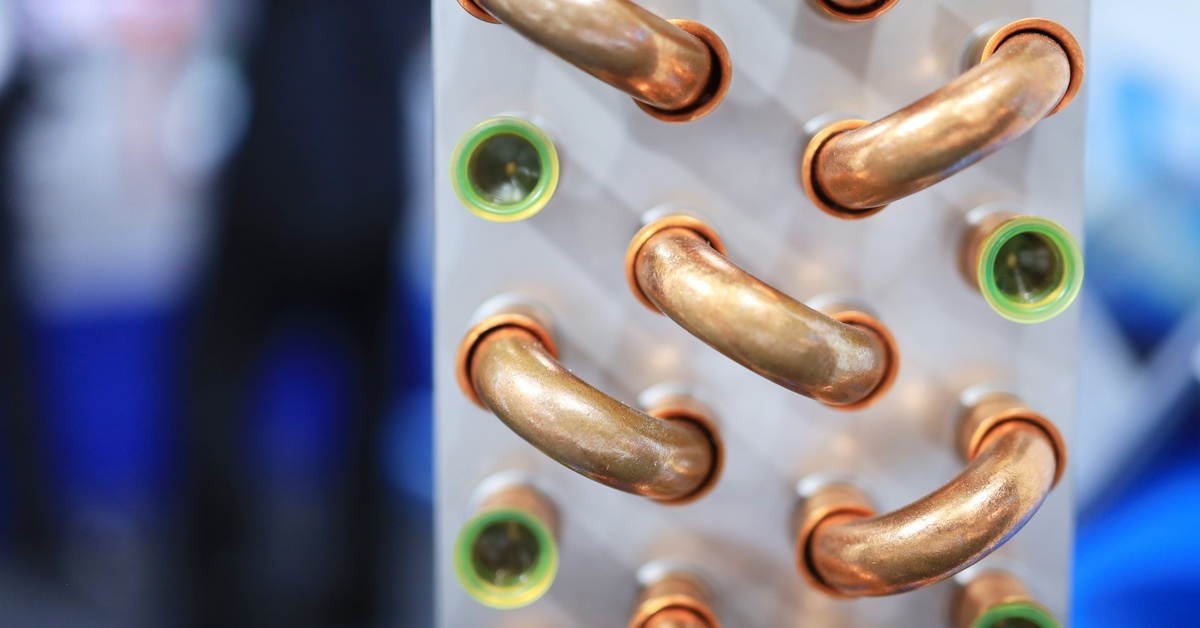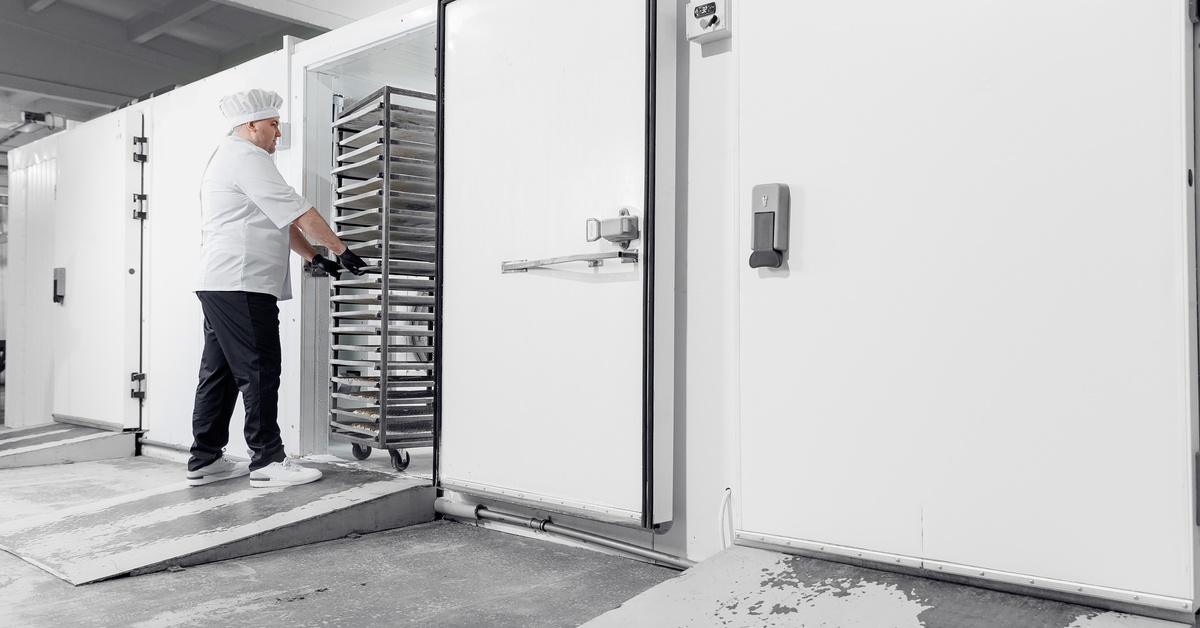How a Walk-In Cooler Refrigeration System Works
13th Aug 2025
Walk-in cooler refrigeration systems are essential tools in the food service, pharmaceuticals, and floriculture industries because they depend on consistent cold storage solutions. These systems ensure perishable products maintain their integrity, safety, and quality by controlling temperature and humidity consistently. If you’re looking to understand how a walk-in cooler refrigeration system works or are planning to invest in one, this guide will explore the inner workings of a walk-in cooler refrigeration system in detail.
What Is a Walk-In Cooler Refrigeration System?
A walk-in cooler refrigeration system maintains a designated temperature within a large, insulated enclosure to preserve perishable items. These systems are critical for commercial industries requiring large-scale refrigeration. They operate with energy-efficient technology while handling substantial product volumes.
Anatomy of a Walk-In Cooler
The structure of a walk-in cooler plays a role in its functionality. The cooler consists of insulated panels, a refrigeration unit, and an airtight door. The insulated panels are typically built using materials like polyurethane or polystyrene to minimize heat transfer, keeping the internal temperature stable.
The airtight door prevents external air from compromising the carefully controlled interior environment. Together, these components create a barrier against fluctuating external temperatures and humidity levels, which is essential for effective cooling.
The Key Components of a Refrigeration System
The compressor, condenser, evaporator coil, fans, and refrigerant enable a walk-in cooler refrigeration system to function. They play a unique role in cooling and maintaining the desired temperature. The compressor is the heart of the system, and it pressurizes the refrigerant, raising its temperature as it moves through the system.
The condenser, meanwhile, cools the refrigerant by releasing heat into the exterior environment. The refrigerant flows into the evaporator coil, where it absorbs heat from inside the cooler, lowering the internal temperature. Fans circulate the air efficiently within the unit, evenly cooling all items within. Together, these components form a seamless cycle that sustains optimal conditions.

The Refrigeration Cycle Explained
The refrigeration cycle is at the core of how every refrigeration system works. This cycle involves the transformation of the refrigerant from a liquid to a gaseous state and back, enabling the removal of heat from the interior environment. It continuously removes heat from inside the walk-in cooler, maintaining the desired temperature. Here’s how it works:
- The refrigerant begins as a low-pressure gas in the evaporator coil, where it absorbs heat from inside the cooler.
- The warmed gas enters the compressor, which increases its pressure and temperature.
- The high-pressure gas enters the condenser coil, where it releases the absorbed heat to the outside environment and condenses into a liquid.
- This cooled liquid refrigerant returns to the evaporator coil to begin the cycle again.
Maintaining Temperature and Humidity
Walk-in coolers don’t just cool the air. They also manage humidity levels to create the ideal storage environment for sensitive products. For example, certain perishable foods require specific humidity levels to avoid spoilage. By controlling both temperature and humidity, these systems preserve the texture, taste, and freshness of food while extending shelf life.
Customizing Your Walk-In Cooler Refrigeration Unit
The needs of businesses vary widely, and you can customize walk-in cooler refrigeration systems to meet your business’s needs. Whether storing fresh ingredients in your restaurant or protecting products at your pharmaceutical company, customization ensures efficiency and utility.
One critical aspect of customization is the choice of refrigerant. Modern systems use environmentally friendly refrigerants, such as R-290. Additionally, business leaders may choose configurations of compressors, condensers, or cooling mechanisms to align with their operational demands. These options make tailored solutions achievable for enterprises and support seamless integration into daily operations.
Energy Efficiency and Modern Refrigeration Systems
Energy consumption is a crucial consideration for any business using refrigeration. Modern walk-in cooler refrigeration systems integrate energy-efficient technologies to minimize operating costs and environmental impact.
Variable-speed compressors, LED fixtures, and enhanced insulation not only keep energy consumption in check but also reduce heat ingress. By improving efficiency, business leaders can achieve sustainability goals while reducing electricity bills.

Challenges in Walk-In Cooler Operation
Even the most advanced refrigeration systems pose challenges. Malfunctions, inefficient operation, and improper maintenance can disrupt cooling and inventory preservation.
A clogged evaporator coil, for example, can lead to inconsistent cooling and high energy consumption. Similarly, door seals that fail to stay airtight can cause temperature fluctuations and compromise the integrity of stored products.
Routine Maintenance To Maximize Performance
Walk-in coolers require maintenance to continue performing efficiently. Regular cleaning of the evaporator and condenser coils sustains heat exchange efficiency. Periodic inspection of seals and gaskets can also prevent air leaks that might strain the system.
Additionally, monitoring refrigerant levels can prevent system inefficiencies or breakdowns. When you schedule routine maintenance, you extend the life of the equipment and protect valuable inventory from spoiling.
Emerging Technologies in Walk-In Refrigeration
The refrigeration industry is always evolving, and recent advancements have brought about exciting developments in walk-in coolers. Smart sensors and IoT technology allow business owners to monitor their systems remotely. Technology can offer real-time data on temperature, humidity, and energy usage, enabling swift action in case of anomalies.
Additionally, innovative cooling technologies, such as magnetocaloric refrigeration, are gaining attention for their efficiency and potential for reducing emissions. By staying up to date with these advancements, business owners and managers can maintain a competitive edge while improving sustainability.
Why Choose a Walk-In Cooler Refrigeration System?
Walk-in cooler refrigeration systems are indispensable for business leaders relying on temperature regulation. They are a practical investment due to their ability to store large quantities of perishable goods securely and reliably.
The combination of high-efficiency components, versatile customization, and cutting-edge technology makes these units indispensable in various industries. With a quality walk-in cooler refrigeration unit, business leaders can operate without disruptions.
Final Thoughts
The way walk-in cooler refrigeration systems work exemplifies the blend of engineering, science, and practicality that businesses need to succeed. This equipment regulates temperature and humidity, preserves inventory, and allows business leaders to maintain consistent product quality.
By understanding how these systems work and investing in maintenance, you can ensure optimal performance and long-term savings. Whether you’re just starting or looking to upgrade your cooling solutions, taking the time to understand these systems will pay dividends in the long run.


